Colon Hydrotherapy Device Manufacturer

Modern colon hydrotherapy equipment in a clinical setting
The Basic Principles of Colon Hydrotherapy
Colon hydrotherapy operates on a simple principle: using filtered water to cleanse the colon of waste material. Think of your colon as your body’s plumbing system. Over time, this plumbing can accumulate residue that may affect its function. Colon hydrotherapy aims to flush this system with purified water, helping to remove accumulated waste.
During the procedure, water flows gently into the colon through a small, disposable tube inserted into the rectum. As the water fills the colon, it softens and loosens waste material. The waste and water then exit through an evacuation tube, completing what practitioners call a “fill and release” cycle.
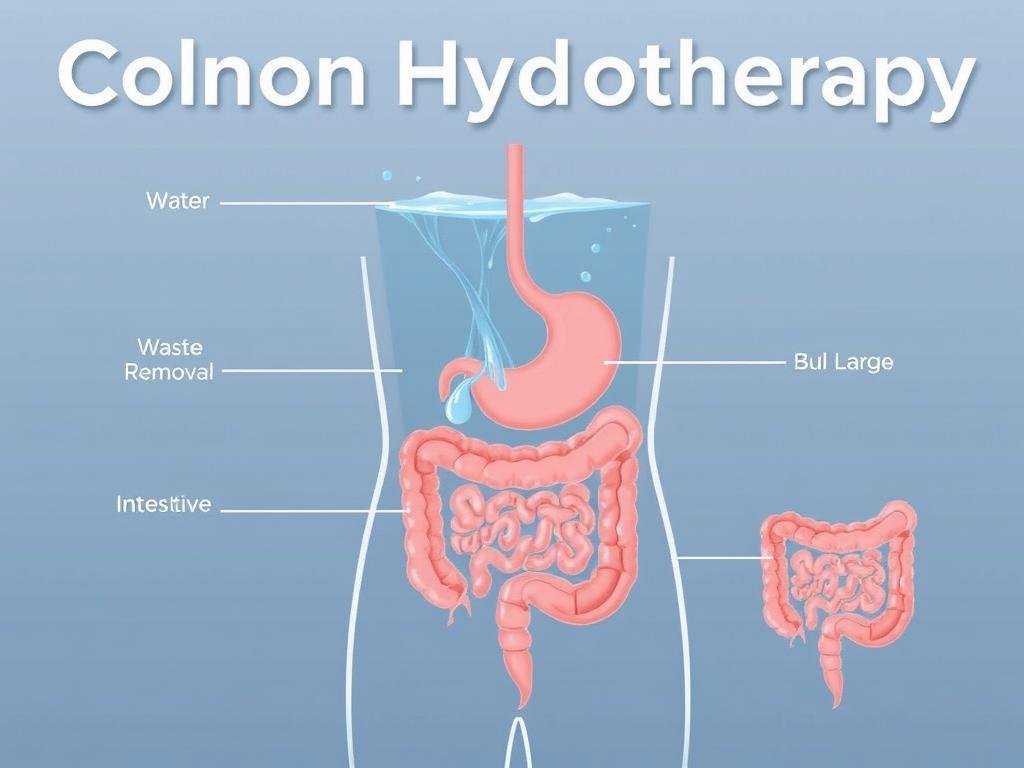
Water flow process during colon hydrotherapy treatment
Wondering if Colon Hydrotherapy Is Right for You?
Every body is different. Learn whether this procedure aligns with your specific health needs.
Detailed Procedure: What to Expect
A typical colon hydrotherapy session lasts between 30 to 45 minutes. Before your first appointment, you’ll complete a health history form and discuss your goals with the therapist. This consultation helps determine if you’re a suitable candidate for the procedure.

Pre-procedure consultation with a certified hydrotherapist
Patient Positioning and Preparation
You’ll be asked to change into a gown and will be positioned comfortably on a treatment table. Privacy is maintained throughout the procedure with proper draping. The therapist will explain each step before proceeding, ensuring you remain comfortable and informed.
The patient typically lies on their side initially for tube insertion, then rolls onto their back for the main procedure. This positioning allows for comfortable water flow and effective waste elimination. The entire setup resembles a sophisticated plumbing system designed specifically for the human body.
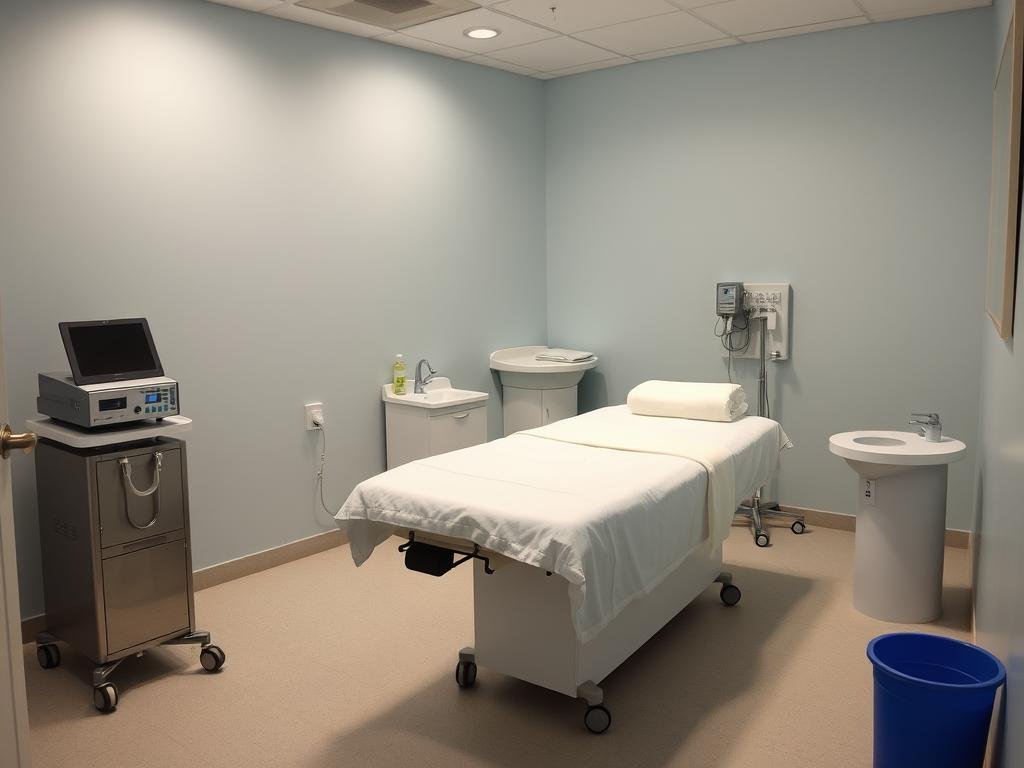
Standard treatment room setup for colon hydrotherapy
Technical Aspects: Equipment and Mechanics
Open vs. Closed Systems
Colon hydrotherapy systems fall into two main categories: open and closed systems. Each offers different benefits and experiences.
Open Systems
In an open system, waste material flows directly from the colon into a basin beneath the table. This allows the therapist to observe the expelled material. The client remains covered throughout the procedure, and the waste is immediately flushed away through plumbing connected to the basin.
Open systems require a therapist to be present throughout the entire session to control water flow and monitor the process.
Closed Systems
Closed systems use a sealed unit where waste material flows through a clear tube, allowing for observation without exposure. These systems offer more privacy as some can be operated by the client after initial setup by the therapist.
The sealed nature of closed systems provides additional hygiene benefits and reduces odors, making the experience more comfortable for many clients.
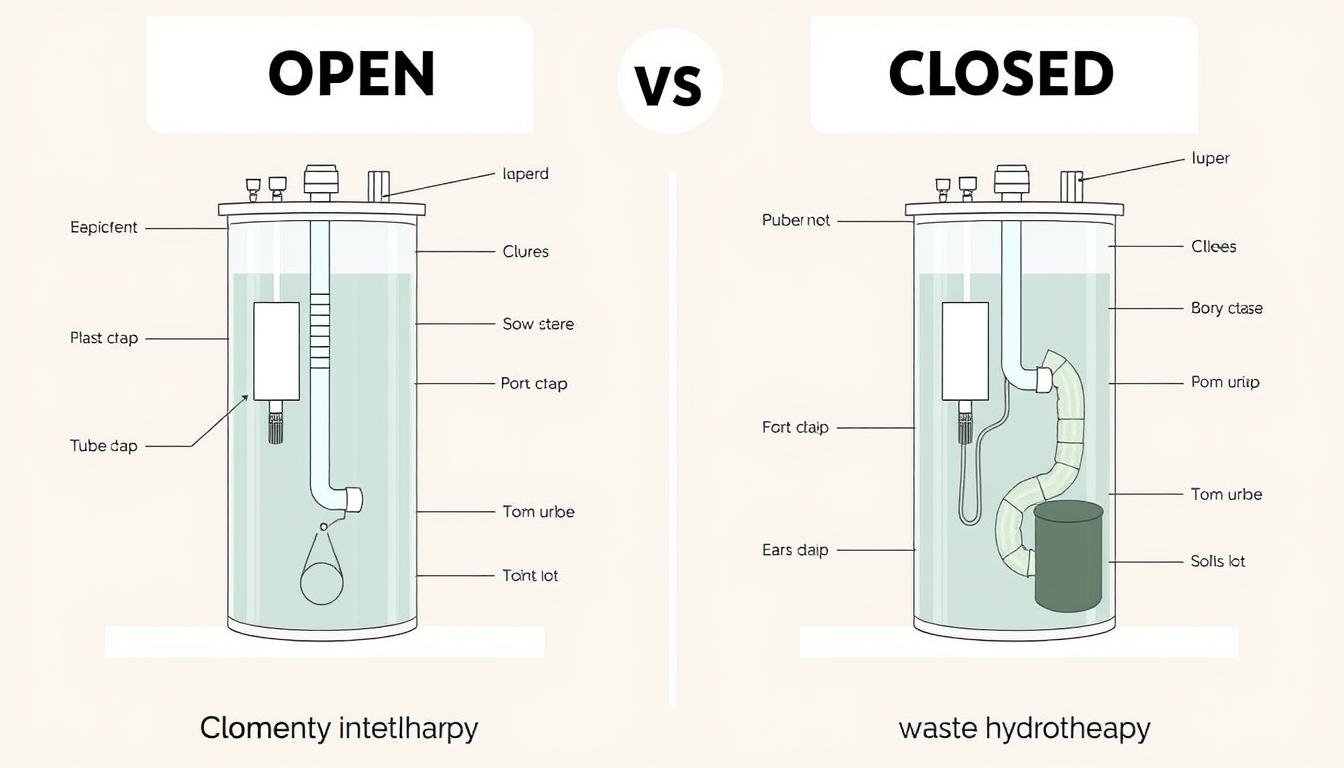
Comparison between open and closed colon hydrotherapy systems
Water Filtration and Temperature Regulation
The water used in colon hydrotherapy undergoes extensive filtration to remove impurities, chlorine, and potential contaminants. Most professional systems employ multiple filtration stages, including carbon filters, UV purification, and sometimes reverse osmosis.
Temperature regulation is crucial for both safety and comfort. Professional equipment maintains water at a carefully controlled temperature, typically between 98°F and 102°F (36.7°C to 38.9°C). This range is close to body temperature, making the experience comfortable while stimulating peristalsis (the natural muscular contractions of the colon).

Advanced water filtration system for colon hydrotherapy
Pressure Control Mechanisms
Modern colon hydrotherapy equipment features sophisticated pressure control systems that regulate water flow. Think of it as a precision faucet system that can adjust water pressure to extremely gentle levels. This prevents discomfort and ensures safety throughout the procedure.
The equipment includes pressure gauges and automatic shut-off features that prevent excessive pressure from building up. This is similar to how modern plumbing systems include pressure-relief valves to protect pipes from damage.
Ready to Learn More About the Procedure?
Speak with a certified colon hydrotherapist who can answer your specific questions.
The Role of Certified Therapists
Certified colon hydrotherapists play a crucial role in ensuring both the safety and effectiveness of the procedure. These professionals undergo specialized training in anatomy, physiology, equipment operation, and client care.
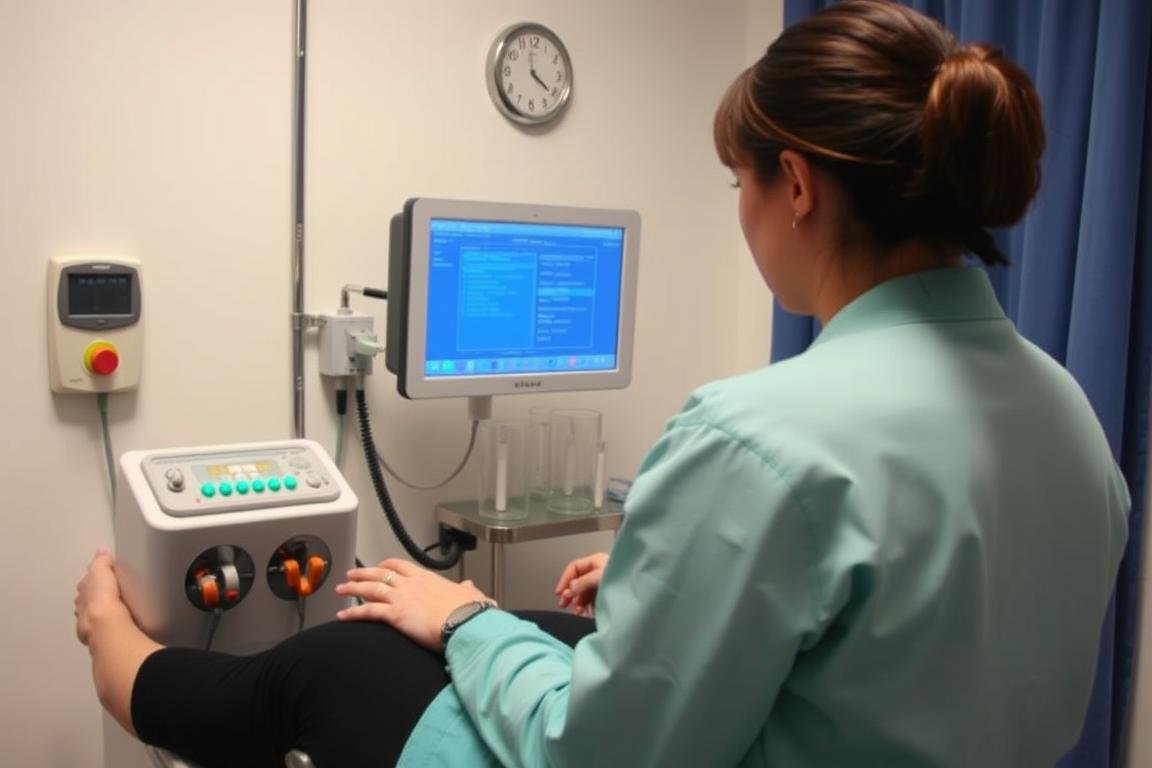
Certified therapist monitoring equipment during treatment
During your session, the therapist will:
- Assess your health history to determine suitability for the procedure
- Explain each step of the process before proceeding
- Monitor water temperature, pressure, and flow throughout the session
- Observe waste elimination to track progress
- Provide abdominal massage when appropriate to facilitate release
- Ensure your comfort and dignity throughout the procedure
- Offer post-procedure guidance on hydration and nutrition
When selecting a therapist, look for certification from recognized organizations such as the International Association for Colon Hydrotherapy (I-ACT) or the National Board for Colon Hydrotherapy (NBCHT). These certifications indicate the therapist has completed standardized training and adheres to established safety protocols.
Safety Protocols and Considerations
Safety is paramount in colon hydrotherapy. Reputable clinics adhere to strict protocols to minimize risks and ensure client wellbeing. Understanding these measures can help you choose a qualified provider.
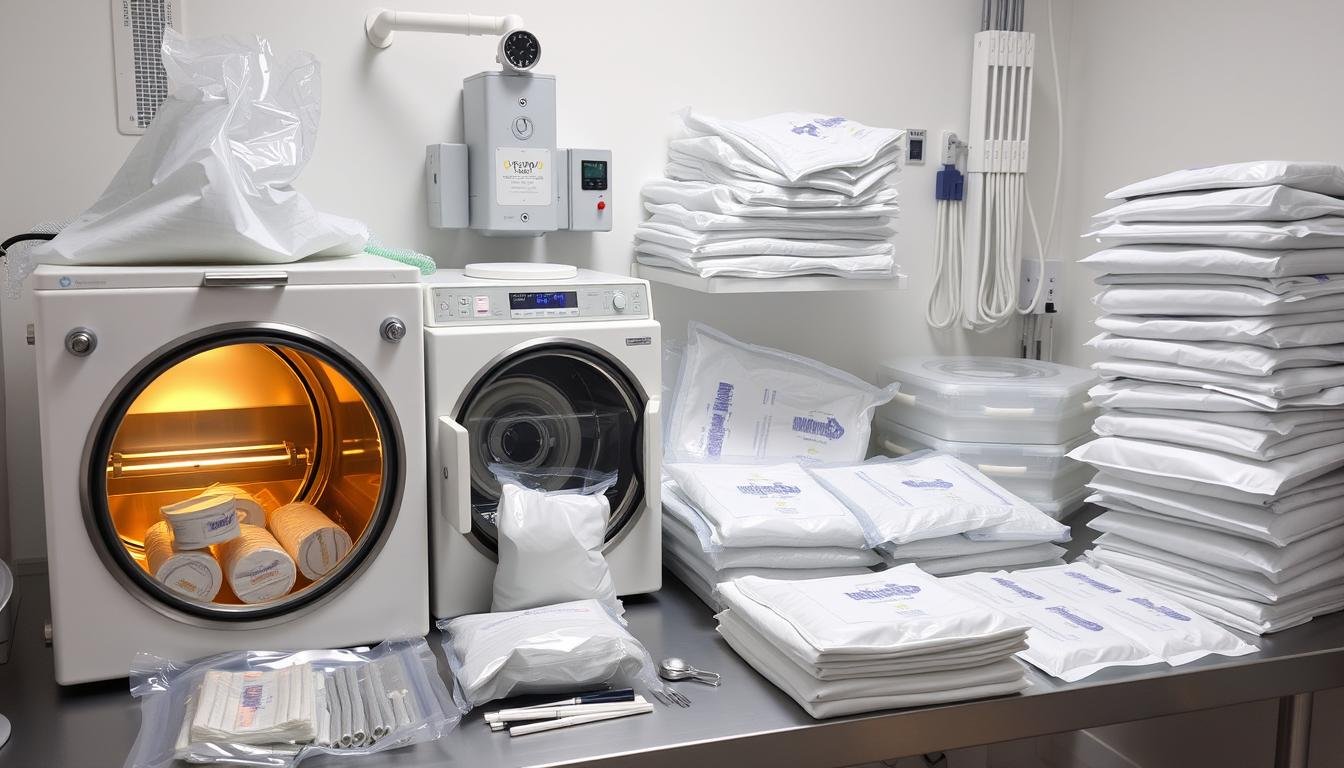
Sterilization equipment for maintaining hygiene standards
Infection Prevention
Professional colon hydrotherapy clinics use disposable, single-use speculums and tubing to eliminate cross-contamination risks. Equipment that cannot be disposed of undergoes rigorous sterilization between clients, similar to dental or medical instruments.
Safety Measures
- Disposable, single-use equipment
- Sterilization protocols for non-disposable components
- Filtered, purified water
- Automatic backflow prevention
- Pressure and temperature regulation
Important Cautions
- Not suitable for certain medical conditions
- Requires proper medical screening
- Should only be performed by certified professionals
- Not a substitute for medical treatment
- May cause temporary discomfort
Medical Contraindications
Colon hydrotherapy is not appropriate for everyone. You should avoid this procedure if you have:
- Recent abdominal or colorectal surgery
- Active inflammatory bowel disease (Crohn’s, ulcerative colitis)
- Diverticulitis or severe hemorrhoids
- Severe cardiac conditions
- Severe anemia or blood disorders
- Abdominal hernia
- Renal insufficiency
- Pregnancy (especially first and third trimesters)
Always consult with your healthcare provider before undergoing colon hydrotherapy, especially if you have any existing health conditions or concerns.
Post-Treatment Care
After your colon hydrotherapy session, proper aftercare helps maximize benefits and minimize any potential discomfort. Think of this as the maintenance phase after cleaning your internal plumbing system.
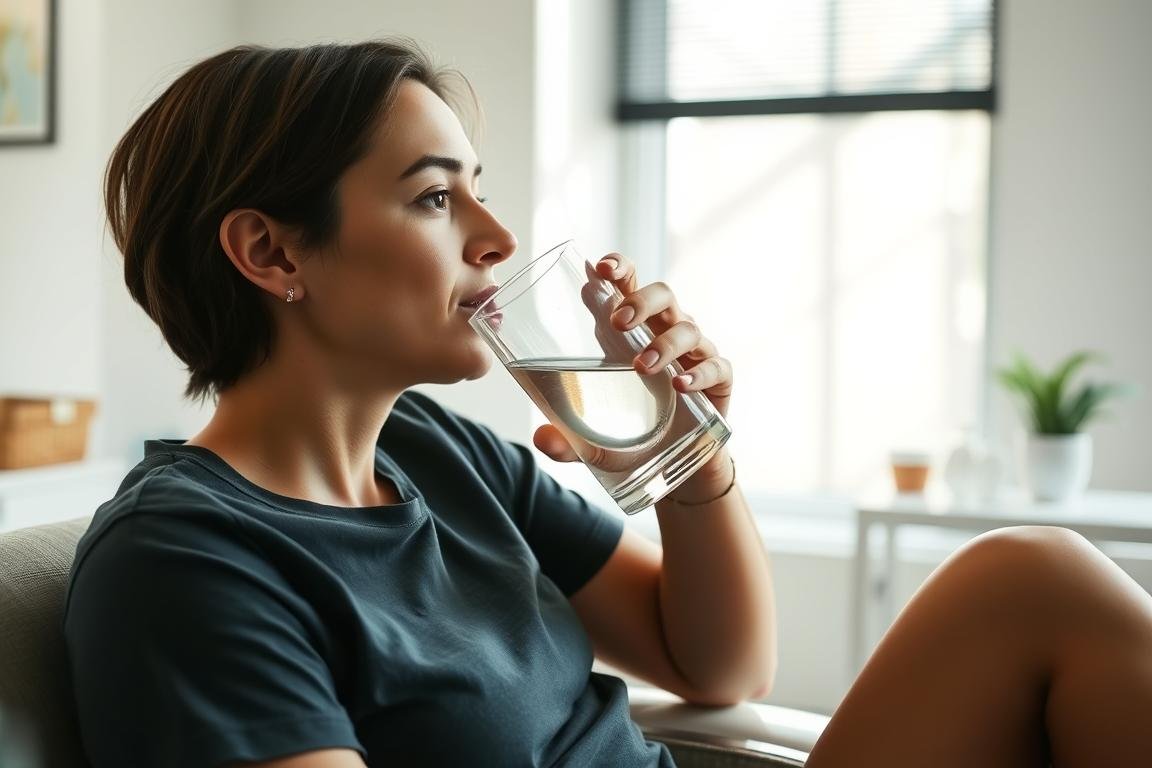
Hydration is essential after a colon hydrotherapy session
Immediate Aftercare
Immediately following your session, you may experience:
- A feeling of lightness or relief
- Mild fatigue
- Increased thirst
- Temporary changes in bowel movements
Your therapist will recommend:
- Drinking plenty of water to rehydrate
- Consuming electrolyte-rich fluids
- Avoiding heavy meals for several hours
- Resting if you feel fatigued
Long-Term Considerations
For ongoing colon health, many practitioners recommend:
- Maintaining adequate hydration daily
- Increasing fiber intake gradually
- Including probiotic-rich foods in your diet
- Regular physical activity to promote natural bowel function
- Stress management techniques

Recommended foods to support colon health after treatment
Frequently Asked Questions
Does colon hydrotherapy remove all waste from the colon?
Colon hydrotherapy does not remove all waste from the entire colon in a single session. The procedure primarily affects the large intestine, and while it can remove a significant amount of accumulated waste, it typically doesn’t reach the small intestine. Additionally, the effectiveness varies based on factors like your colon’s condition, hydration levels, and muscle tone.
Think of it like flushing a plumbing system—while one flush can clear visible debris, it may take multiple sessions to address buildup that has accumulated over time. Most practitioners recommend a series of sessions for optimal results, especially for first-time clients.
How many colon hydrotherapy sessions are needed?
The number of recommended sessions varies based on individual factors including your health goals, colon condition, and response to treatment. For someone new to colon hydrotherapy, practitioners often suggest an initial series of 3-4 sessions spaced about a week apart. This allows for progressive cleansing as each session can access areas that may have been blocked by waste during previous treatments.
After the initial series, maintenance sessions might be recommended quarterly or biannually, though this varies widely among practitioners. It’s important to note that medical evidence supporting specific session frequencies is limited, and recommendations are often based on clinical experience rather than scientific studies.
Is colon hydrotherapy painful?
When performed correctly by a certified therapist, colon hydrotherapy should not be painful. Most clients report a sensation of fullness or mild pressure as water enters the colon, similar to the feeling you might experience when needing a bowel movement. Occasional cramping may occur as the colon contracts to eliminate waste, but this is typically brief and relieved during the release phase.
Discomfort during the procedure often indicates that adjustments are needed to water temperature, pressure, or flow rate—which a skilled therapist will modify immediately. Any sharp or persistent pain is abnormal and should be reported to your therapist right away.
What’s the difference between colon hydrotherapy and an enema?
While both procedures involve introducing water into the colon, they differ significantly in scope, equipment, and effect. An enema typically uses a small volume of water (1-2 quarts) and reaches only the rectum and lower portion of the colon. It’s generally self-administered and designed for short-term relief of constipation.
Colon hydrotherapy, by contrast, uses a larger volume of water introduced gradually over 30-45 minutes, potentially reaching the entire length of the colon. It employs specialized equipment with temperature and pressure controls, and is performed by a trained professional. Think of an enema as rinsing just the end of a pipe, while colon hydrotherapy attempts to clean a larger portion of the plumbing system.
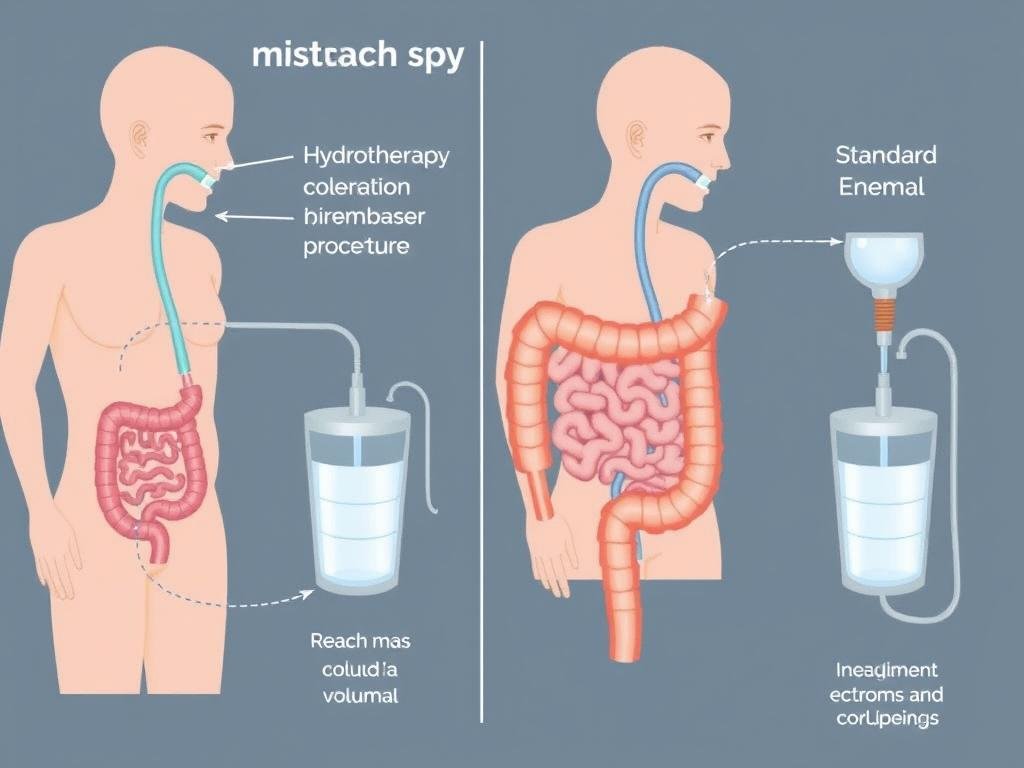
Comparison between colon hydrotherapy and standard enema
Making an Informed Decision
Colon hydrotherapy represents one approach to digestive health that some find beneficial. However, it’s important to approach it with realistic expectations and proper medical guidance. The procedure is not universally recommended by conventional medical practitioners, and scientific evidence for many claimed benefits remains limited.
If you’re considering colon hydrotherapy, take these important steps:
- Consult with your healthcare provider, especially if you have existing health conditions
- Research potential practitioners thoroughly, verifying their certification and experience
- Ask detailed questions about their equipment, safety protocols, and aftercare recommendations
- Consider starting with a single session to assess your body’s response before committing to multiple treatments
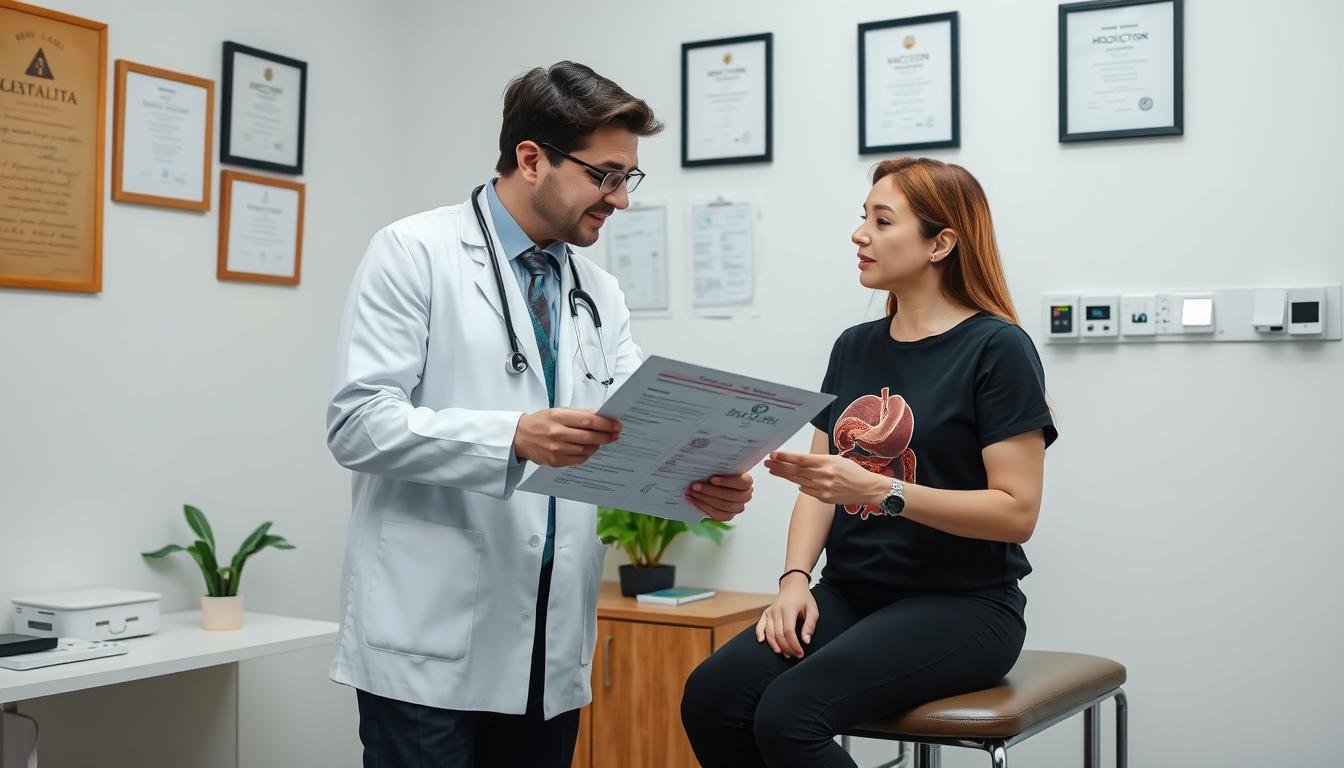
Consulting with a healthcare provider before trying colon hydrotherapy
Ready to Learn More About Colon Hydrotherapy?
Speak with a certified professional who can answer your specific questions and determine if this procedure is appropriate for your needs.
